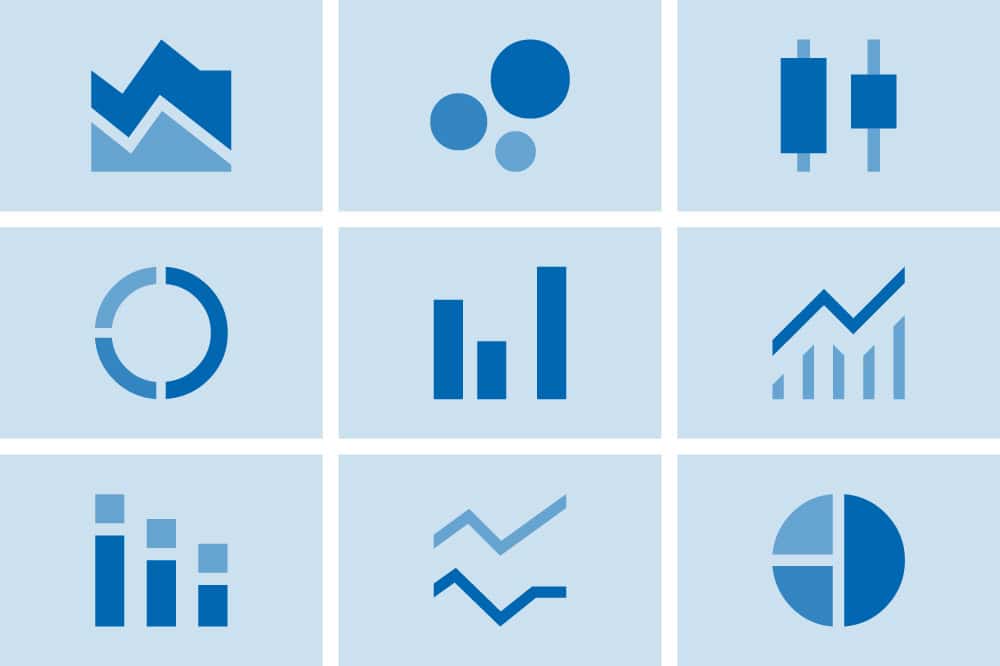BUDGET TERMS AND PROCESSES — AND WHY THEY MATTER
Whether it’s health care, tax reform, the debt ceiling, the end of the fiscal year or the annual appropriations process, the legislative calendar is filled with issues that have significant fiscal implications.
Understanding what’s happening on Capitol Hill requires an understanding of the Congressional budget process — which is notoriously technical, complex and arcane.
Many Americans might not know what the Byrd Rule is or how long the budget window lasts, but these terms describe important rules and procedures that are meant to help ensure responsible budgeting.
Budget decisions, after all, affect the lives of all Americans, as well as our economy. And with a $4 trillion budget at stake — one-fifth of the U.S. economy — understanding the rules behind the budget is critical for policymakers and Americans alike.
As our elected leaders debate the spending and revenue policies for 2018, this explainer aims to help readers understand complex budget terms and processes — and why they are so important.
Congressional Budget Resolution
A Congressional Budget Resolution is a “blueprint” that guides fiscal decision-making in the Congress. It is passed by the House and the Senate, and it establishes the top-line levels for the budget by setting targets for revenues and upper limits for subsequent spending bills over a specific period or budget window.
Although it is not presented to the president for signature (and hence is not a law), it is a critically important document because it sets the terms of the budget debate. It defines the Congress’ goals for federal spending, revenues, deficits and debt, and allocates budgetary resources among the major functions of government (such as national defense, transportation, health, veterans’ benefits, general government and income security). It also can provide a vehicle for making changes to mandatory programs and revenues through a process known as reconciliation.
Budget Window
The budget window is the number of years to which the spending and revenue decisions in a budget resolution apply. Law requires that the budget resolution cover at least five years — the upcoming year, plus the next four years.
While a 10-year window is currently the standard, the number of years covered by budget resolutions has varied. In the 1970s, 1-year resolutions were the norm; in the 1980s, the budget window lengthened to 3 years. Beginning in the 1990s, budget resolutions have most frequently covered 5 years, but there have been one 6-year, one 7-year, and six 10-year budget resolutions. The 2016 and 2017 budget resolutions each covered 10 years.
Recently, there have been calls to lengthen the budget window to 20 years or longer. There are several arguments in favor of a longer budget window:
- It would encourage a longer-term approach to budgeting, forcing lawmakers to focus on the increasing gap between future spending and revenues and rising deficits and debt.
- It would give lawmakers more information about the eventual costs or savings resulting from their decisions.
- It would make it easier to attract support for the reforms that put our budget on a fiscally sustainable path over the long term, and encourage the adoption of more gradual reforms by reducing the risk of excessively austere near-term fiscal policy.
However, this potential change to the budget process also carries risks, and could be manipulated to avoid fiscal responsibility. For example, a longer budget window could be used to delay the fiscal discipline imposed by the Byrd Rule, which bars reconciliation legislation from including provisions that increase the deficit outside of the budget window.
Budget Reconciliation
Every year, Congressional budget writers have the option of including special instructions — known as reconciliation instructions — as part of the budget resolution. Reconciliation is a powerful process, whereby legislation drafted to meet those instructions has an easier path to passage.
Most importantly, reconciliation legislation can be passed in the Senate by as few as 50 votes instead of the 60-vote threshold needed to prevent or break a filibuster. (Legislation considered outside of reconciliation can be delayed indefinitely in the Senate by a filibuster unless 60 Senators agree to end it). Budget reconciliation legislation is also expedited in both the House and the Senate by limits on the amount of time for debate and for consideration of amendments.
Reconciliation, with its expedited procedures, provides Congress with an easier means to consider and adopt tax and spending legislation. Not surprisingly, given the current 52-48 Republican majority in the Senate, reconciliation has been prominent in the news this year as Congressional leaders have been attempting to use it to pass healthcare and tax reform.
However, reconciliation can only be used under certain conditions. For example, it cannot be used without the prior adoption of a budget resolution, and it is governed by the Byrd Rule, which places limits on the kinds of legislative provisions that can be included.
The Byrd Rule
The Byrd Rule restricts what can be included in reconciliation legislation in the Senate. At its core, the rule prohibits provisions that are viewed as “extraneous” to the budget. The Byrd Rule therefore prevents a reconciliation bill from containing non-budgetary provisions that supporters might otherwise wish to have an easier path to passage.
Under the Byrd Rule, a provision is considered extraneous if it:
- Does not produce a change in outlays or revenues
- Increases the deficit beyond the “budget window”
- Makes changes to Social Security
It is because of the Byrd Rule that legislation to repeal and replace the Affordable Care Act (ACA) has not included purely regulatory changes to insurance markets that the ACA ushered in; such provisions would violate the Byrd Rule’s prohibition of non-budgetary provisions. The Byrd Rule has also led Congress to pass legislation that “sunsets” or expires within 10 years, in order to avoid the prohibition against increasing deficits beyond the budget window. The 2001 tax cuts are an example of when the Byrd rule drove the inclusion of this type of sunset in legislation.
Although the Byrd Rule only applies in the Senate, it can deter the House from including provisions in its reconciliation bill that are likely to violate the rule and be struck from the legislation in the Senate.
PAYGO
PAYGO, or Pay-As-You-Go, is a budget enforcement mechanism aimed at encouraging fiscally responsible policymaking. In the simplest terms, PAYGO forces lawmakers to pay for their priorities. It requires that any new legislation that adds to the deficit, whether through an increase in mandatory spending or a decrease in revenues, must be fully offset by other spending or revenue changes so that the net effect of legislative changes is deficit neutral.
PAYGO has taken slightly different forms over the years. It was first established in 1990 as part of legislation to reduce large deficits. That original PAYGO law expired in 2002 but was restored in the Statutory Pay-As-You-Go Act of 2010. In addition to the statutory requirement, the House and Senate have also implemented separate PAYGO rules as a way to guide each chamber’s budget activities. The Senate PAYGO rule was implemented in 1993 and remains in effect today; the House PAYGO rule was implemented in 2007, repealed and replaced with a Cut-As-You-Go rule in 2011 (which focused exclusively on the mandatory spending effects of legislation), and reinstated as originally structured in 2019.
Statutory PAYGO Law
The statutory PAYGO law applies to any newly enacted legislation that affects mandatory spending and/or revenues. The projected costs and savings of each enacted bill is tracked by the Office of Management and Budget (OMB) on what are known as PAYGO scorecards.
The PAYGO scorecards show the 5-year and 10-year average costs or savings associated with each new piece of legislation. The example below shows the PAYGO treatment of a hypothetical bill enacted in 2020 with an estimated cost of $25 billion through 2025 and a total cost of $20 billion through 2030 as the costs in earlier years eventually turn to savings. For both the 5- and 10-year periods, the cost is divided by the number of years in the period to generate an average cost per year. Those averages are then assigned to each year in the scorecard. Because the scorecard uses averages, rather than the actual year-by-year estimate, the assigned cost in a given year could be higher or lower than the amount displayed in the cost estimate.
OMB compiles and keeps a running total of PAYGO scorecards for all new legislation involving mandatory spending and/or revenues. If the sum of all projected costs for a given year is greater than zero, the President orders a sequestration (cancellation of budgetary resources) in non-exempt mandatory spending programs to offset that cost.
The effect of a PAYGO sequestration would be limited because most mandatory spending programs — such as Social Security, federal retirement programs, veterans’ programs, most unemployment benefits, and low-income entitlements like Medicaid — are exempt from the automatic cuts. When sequestration is ordered, each non-exempt mandatory spending program is reduced by the same percentage with the exception of Medicare, which is limited to a maximum reduction of 4 percent. However, a PAYGO sequestration can be averted if Congress waives the rule or resets the scorecards to zero.
Senate and House PAYGO Rules
As with statutory PAYGO, the Senate and House PAYGO rules apply to proposed legislation affecting mandatory spending and revenues. The Budget Committees of the House or Senate, which commonly use calculations provided by the Congressional Budget Office, are responsible for tracking projected costs. As opposed to the PAYGO law, the PAYGO rules apply to each measure individually — enforced by a point of order to prevent the consideration of legislation that does not comply with the PAYGO rules.
PAYGO rules can be an effective tool to prevent the consideration of fiscally irresponsible legislation. In fact, the Senate PAYGO rule has been used to prevent the consideration of 44 amendments since its creation in 1993.
While the PAYGO law and rules function differently, they each work to promote fiscal responsibility. The PAYGO rules encourage legislators to consider policies individually and, if they are a priority, find a way to pay for them. The PAYGO law, on the other hand, takes a broader view by looking at a full year’s actions — discouraging fiscal irresponsibility by requiring sequestration if the set of actions during that year would have increased the deficit. While no budget process rule is, by itself, a substitute for lawmakers making fiscally responsible decisions, tools like PAYGO can help ensure that fiscal considerations are an important part of policymaking.
Sequestration
Sequestration is applied to both discretionary and mandatory programs, though some programs (mostly mandatory ones) are exempt. For example, the discretionary and mandatory programs of the Department of Veterans Affairs are exempt, as are Social Security and unemployment benefits and many of the mandatory programs for low-income Americans, such as Medicaid, Child Nutrition Programs, and Federal Pell Grants.
First created in 1985, sequestration was designed to be a blunt instrument — whose arbitrary effects would be so undesirable that they would compel policymakers to reach compromise on budget legislation rather than allow the cuts to go into effect. Since then, sequestration has lost some of its deterrent effect. For example, after the “super committee” failed to agree on ways to achieve the $1.2 trillion in deficit savings mandated by the 2011 Budget Control Act, a sequester of FY 2013 discretionary budget authority was imposed. A sequester of non-exempt mandatory programs was also imposed first through FY 2021 and subsequently extended through FY 2025.
The failure of the super committee also led to additional reductions in the discretionary caps through FY 2021. Although these cap reductions are sometimes called “the sequester,” they are not an OMB-implemented sequester. Instead, they simply reduce the top-line spending available for defense and non-defense discretionary programs, but lawmakers retain the ability to decide how to allocate the remaining resources among various accounts programs and activities.
Discretionary Spending Caps
The Budget Control Act of 2011 placed limits on discretionary spending for fiscal years 2012 to 2021. Currently and for most of the years covered by the legislation, separate caps have applied to spending on national defense and non-defense programs. Some discretionary spending, however, is not subject to these caps:
- Spending designated as an emergency
- War-related activities (called Overseas Contingency Operations, or OCO)
- Disaster relief
- Certain program integrity activities
- Wildfire suppression (starting in fiscal year 2020 as the result of a recent amendment to the original legislation).
Another element of the Budget Control Act was the establishment of a joint select committee — comprised of members of the House and Senate from both parties — that was charged with coming up with additional deficit reduction by the end of 2011. The committee was unable to come to agreement, though, which triggered a reduction in the caps originally set by the Act. However, subsequent legislation raised the caps for 2014 through 2019. If no further legislation is enacted, the caps for 2020 and 2021 will be substantially below the appropriations provided for 2019.
Congressional Budget Office
CBO plays a vitally important role in the federal budget process. CBO was established as a nonpartisan agency under the Congressional Budget and Impoundment Control Act of 1974, which organized the budget process in the legislative branch. Prior to that law, the president’s Office of Management and Budget (OMB) was the primary source of budgetary and economic information for the federal government.
CBO’s core mission is to provide nonpartisan and independent analyses to the Congress about the budget and economy, thus improving the transparency and openness of the budget process. The agency develops and updates a baseline projection of revenues, spending, and the economy under current law, which serves as a benchmark for Congress’ legislative activity. Prior to a vote by the House or the Senate on legislation, CBO prepares estimates of the bill’s budgetary impact. CBO’s analyses are nonpartisan and reflect objective data and information. CBO does not make recommendations. The agency works most closely with the Congressional committees responsible for budget, appropriations, and tax legislation. Members of Congress rely on CBO’s analyses and feedback of legislative proposals as they craft legislation. CBO also prepares numerous reports on emerging economic developments and the key challenges facing the federal budget.
In the exercise of its responsibilities, CBO often gets criticized by members who challenge their estimates. These members are often seeking to pressure CBO to provide more “favorable” scoring of their proposals. These criticisms actually are a testament to the important role that CBO plays in the budget process. CBO is an unbiased “referee” in the Washington’s budget battles, and, like all referees, it is sometimes criticized for the calls it makes. While proponents may be quick to complain about the CBO cost estimates that apply to their own favored proposals, they often sing CBO’s praises when legislation they oppose receives an unfavorable score.
For more information about the budget process, please visit PGPF’s Understanding the Budget.
-
The main exception is that budget resolutions cannot be used for making changes to Social Security.
-
From Bill Heniff, Jr., “The Budget Reconciliation Process: The Senate’s “Byrd Rule”, Congressional Research Service, November 22, 2016.
-
Provisions also violate the Byrd Rule when they produce changes in outlays or revenues which are merely incidental to the non- budgetary components of the provision or the committee adding the provision is not in compliance with its instructions from the budget resolution or submits a provision that is outside of the jurisdiction of the committee.
-
The super committee was a special, bipartisan committee made up of members of the House and the Senate that was created by the Budget Control Act of 2011. It was charged with developing a 10-year deficit reduction plan.
Further Reading
Chart Pack: Fiscal Outlook
The national debt is already at its highest level since just after World War II, and annual deficits are on an upward trajectory.
What Is the Child Tax Credit?
The CTC is designed to make raising children more affordable by easing the financial burden faced by families.
The National Debt Grew by $1 Trillion in Just Six Months
Gross federal debt has grown by $5 trillion in just the last five years — from $16 trillion at the end of fiscal year 2012 to $21 trillion today.


